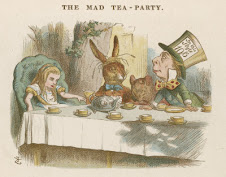An analysis of the new maps that have been drawn up by California's Citizens Redistricting Commission reveals that there are twelve State Assembly districts and six State Senate districts in which the percentage of decline-to-state voters is significantly greater than the percentage in the state at large. The state legislative district with the highest percentage of Independents is AD19 in West San Francisco, where 31% of voters are registered Independent. Indeed, there are more than twice as many decline-to-state voters as Republicans in this majority Democratic district. Just 13% of AD19's voters are registered Republican, while 53% are Democrats.
No less than six Democrats have already expressed interest in running for the open seat, including two Daly City council members and the current San Francisco Assessor. To get a sense of the potentially surprising effects inherent in the top-two open primary system, let's assume for the sake of argument that six Democrats, a Republican, an Independent and a third party candidate from the Green or Peace and Freedom Party (it is west San Francisco after all!) were to run in the district's primary election next year.
One might easily conclude that two Democrats would be assured the top two spots in the primary and head to the general election, since it is a Democratic majority district. But, if there were a Democratic favorite supported by half of all registered Democrats, with the rest of the district's Democrats more or less equally supporting the other five Democrats in the race, the Republican, Independent or third party candidate could easily advance to the general election with as little as 8-10% support in the primary, depending on how the district's Independents vote. [Emphasis added.]
It is for this precise reason that the state's Democratic and Republican parties are considering holding caucuses or conventions prior to any such primary elections, to nominate the candidate who would be the "official" representative of the party at those elections and hopefully avoid splitting their party's vote.Read the whole thing. It is noteworthy that the Democratic and Republican parties cannot stop anyone from running for a given office in the primary under their party's banner. Upstart Democrats and Republicans can run in the primary even if they are actively opposed by the party as a whole. One could imagine an array of potential dirty tricks that could be played by a well-organized third party organization given this situation. One would need only take a page or two out of the Democrats' and Republicans' playbooks, for instance, by running "dummy" major party candidates in order to split the major party vote and create an opening for a third party or Independent campaign. Of course, a third party group may not have to even do this, as the Democrats and Republicans could very well supply those candidates themselves. And sometimes it seems like all of the candidates from the major parties are "dummy" candidates, no?
The vote-splitting phenomenon creates potential strategic openings for third party and independent candidates in both lopsided districts that lean heavily toward one of the two major parties, as well as in districts where the major parties are relatively competitive. To ignore such opportunities is both short-sighted and self-defeating, even if one continues to work toward the ultimate goal of repealing or reforming of the system as a whole.







2 comments:
Give me a little credit here D.Eris.
The potential to vote(or o.w. act) strategically in the "open primary" and the general election is why I said that "top two" is not an abomination.
But I think it's also crucial to rally third parties/independents around the sorts of American Forms of PR that Fair Vote is going to be pushing hard for...
dlw
dlw
"To ignore such opportunities is both short-sighted and self-defeating, even if one continues to work toward the ultimate goal of repealing or reforming of the system as a whole. "
We've talked about this before D.eris, third parties (and otherwise alternative vehicles/candidates) need to strategize within the current system, rather than waiting for some friendly reforms to be handed to them. (Either that, or organize around those reforms in states that allow citizens to put initiatives on the ballot.)
Good piece all around.
Post a Comment